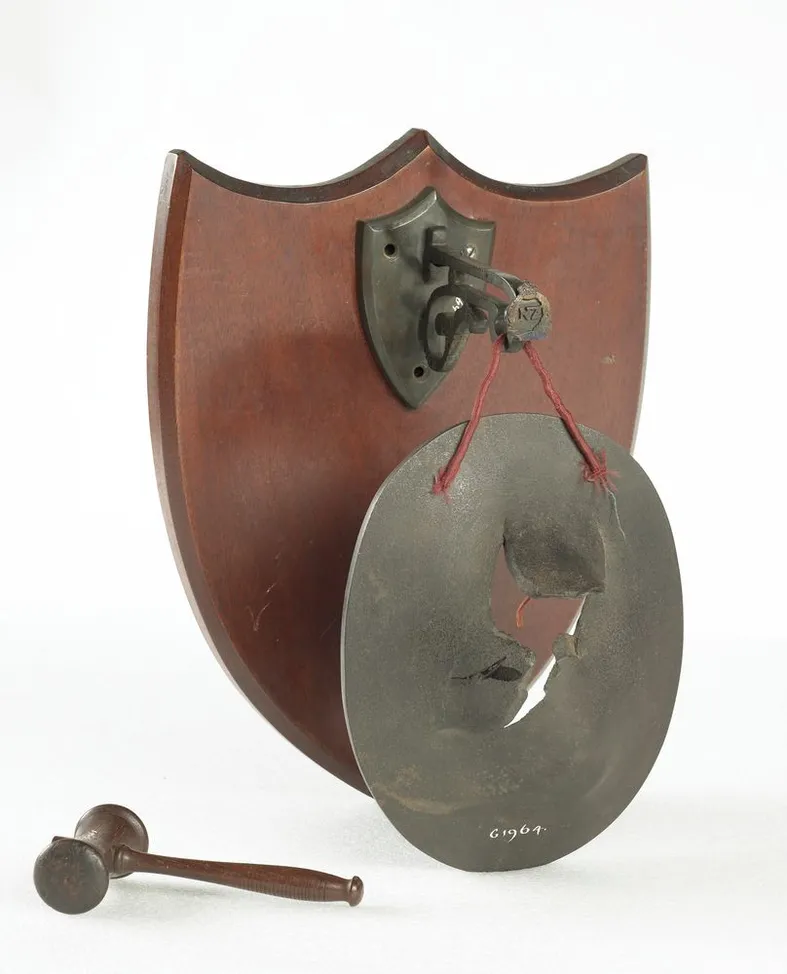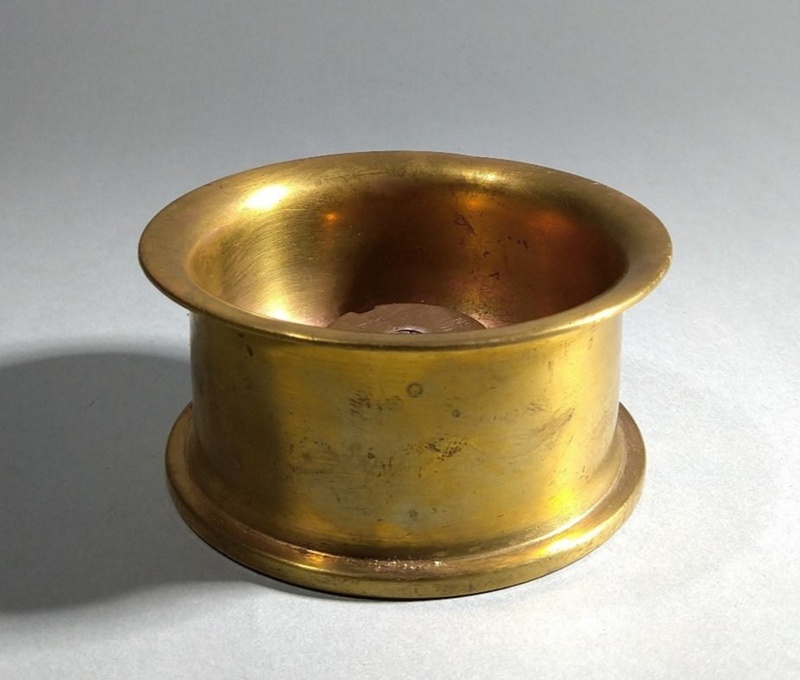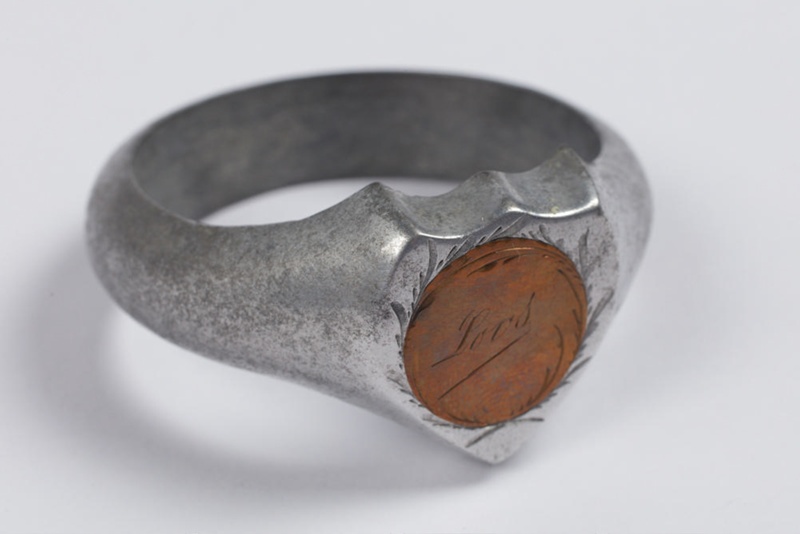The term ‘trench art’ refers to decorative objects that were created from the detritus of war. There are examples of trench art from the Napoleonic Wars in the early 19th century to the present day, however trench art particularly flourished during WWI when soldiers were engaged in extended periods of trench-based warfare.
Soldiers were looking for distraction, entertainment and a creative outlet created small pieces as souvenirs. They repurposed bullets and copper shells to create everything from ashtrays to matchbox holders to letter knives to embroidered pieces. To say they were made in the depths of the trenches is somewhat deceptive, in truth, frontline soldiers rotated regularly behind the front lines.
It is in these areas that they would have had access to the tools and machinery to make more refined pieces, though easier metalwork pieces like aluminum rings may have to have been crafted in the trenches without the risk of drawing enemy fire.
Other pieces, made from wood, bone or cloth, most likely would have been made by convalescent soldiers or those in the trenches.
Perhaps one of the most spectacular, and equally disturbing pieces of war souvenirs held in our national collection is a dinner gong that was crafted from a piece taken from the HMS British battlecruiser which was struck by a German shell during the Battle of Jutland in 1916.

Dinner gong, Unknown maker, 1916. Te Papa (CC BY-NC-ND 4.0)
Although this piece may unsettle civilians who have never witnessed war, this crafty keepsake may have been seen as a lucky memento to those who have experienced many near-death situations.
Whatever way you choose to regard trench art, each piece speaks of a desire to leave a message beyond the trenches.
From hand-stitched tapestries to etched hipflasks, this kete | set looks at the breadth of the pieces held across collections in Aotearoa.
Field craft
-

Taonga
Trench art ashtray
-

-










